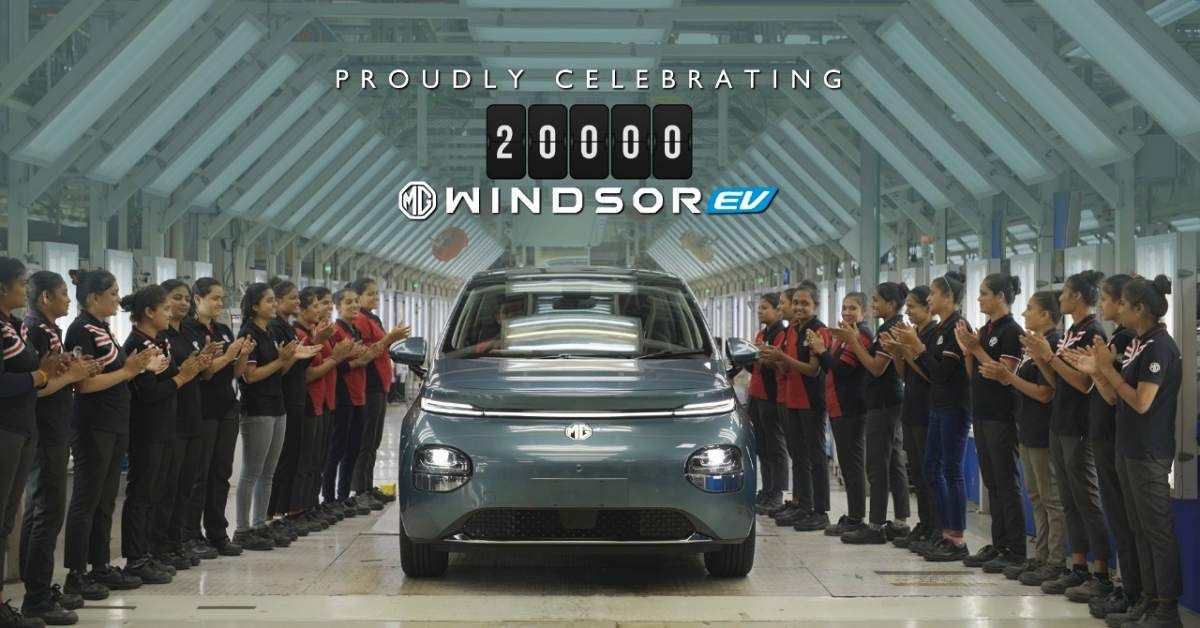MG Windsor Sells More Than The Tata Nexon And Punch EVs Combined


The electric vehicle market in India has seen notable changes over the past eight months, with JSW MG Motor's Windsor EV surpassing Tata's established models, the Nexon EV and Punch EV. Since September 2024, the Windsor has not only claimed the position of India's top-selling electric car for seven consecutive months but has also recorded higher sales than both Tata models combined.
Recent wholesale industry data indicates that the MG Windsor EV has registered 23,918 units since its market entry in September 2024 through April 2025.
During this period, Tata Motors sold 11,296 units of the Nexon EV and 9,563 units of the Punch EV, totaling 20,859 units. This places the Windsor EV approximately 3,000 units ahead of its competitors, representing a notable development in the EV segment.
The monthly sales figures further highlight this trend. In April 2025, the Windsor EV recorded 3,677 units while Nexon and Punch registered 1,615 and 1,258 units respectively. This pattern began shortly after the Windsor's introduction, with a substantial increase in sales occurring from October 2024 onwards.
The MG Windsor EV's pricing strategy appears to resonate with buyers. With variants priced between ₹13.99 lakh and ₹15.99 lakh (ex-showroom), it positions itself competitively against the Tata Nexon EV (₹12.49 lakh to ₹16.29 lakh) and Mahindra XUV400 (₹15.49 lakh to ₹19.39 lakh).
The Battery-as-a-Service (BaaS) model offers customers an option to purchase the vehicle without the battery cost included upfront. Under this arrangement, the Windsor is available from ₹9.99 lakh with a battery rental fee of ₹3.9 per kilometre. This approach reduces the initial purchase price, potentially making the vehicle accessible to more customers.
The Windsor EV combines crossover styling with MPV functionality, providing a spacious interior despite its compact external dimensions. Being designed specifically as an electric vehicle allows for efficient use of space through strategic component placement.
The vehicle comes equipped with a 38 kWh lithium iron phosphate battery that provides an ARAI-certified range of 332 kilometres. Actual driving conditions typically yield between 250-308 kilometres on a full charge, which serves adequately for daily urban commuting.
The Windsor offers a well-constructed cabin with attention to quality materials. Space management is a notable aspect, with generous legroom and headroom, particularly in the rear seats which can recline up to 135 degrees. Storage capacity stands at 604 litres in the boot, slightly reduced in the top variant, addressing practical requirements for family use.
Feature offerings include electronic flush-fitting door handles, ventilated front seats, a 15.6-inch touchscreen infotainment system with wireless Android Auto and Apple CarPlay connectivity, connected vehicle technology, and various OTT applications. While the touchscreen controls many functions, this integration follows current industry trends.
The absence of a rear wiper, occasional ride quality issues on uneven surfaces, and the dependency on touchscreen controls for basic functions represent areas where improvements could be made, though these have not significantly impacted the model's appeal.
By March 2025, JSW MG Motor had secured a 31% retail market share in the EV segment, positioned behind Tata Motors at 38%. This represents substantial growth from 14.12% in January 2024, indicating shifting consumer preferences.
The company has plans to introduce a Windsor Pro variant featuring a larger battery pack, advanced driver assistance systems, and vehicle-to-load capability. The existing 38kWh battery might be upgraded to a 50kWh unit, similar to that used in the ZS EV, addressing range considerations.
The electric mobility segment continues to evolve in India, with the Windsor EV demonstrating that appropriate pricing, practical design, and relevant features can challenge established market positions. MG's approach appears to be resonating with consumers in the competitive electric vehicle market, as evidenced by consistent sales performance over consecutive months.
The Windsor's success suggests that practical considerations such as initial cost, usable range, and interior space play significant roles in consumer decision-making when considering electric vehicles, potentially influencing future product development across manufacturers